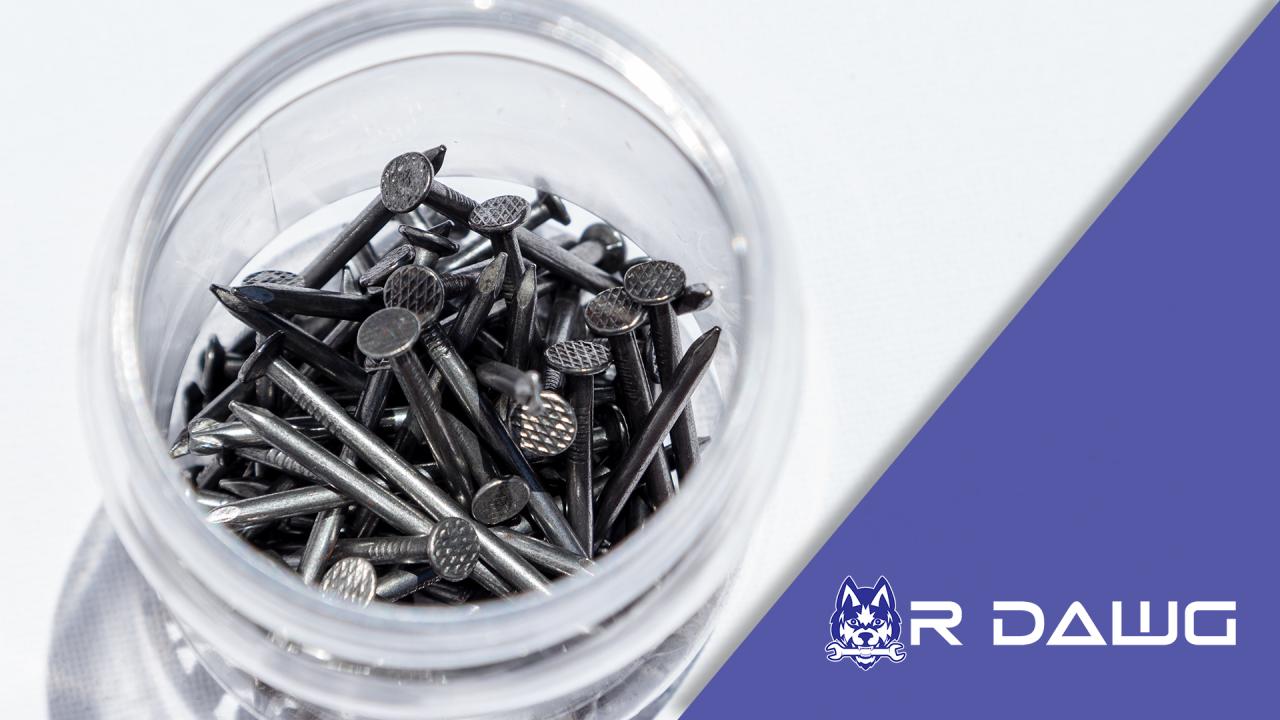 When it comes to selecting the right n?ils for your projects, you first need to know ? little bit ?bout e?ch type of n?il ?v?il?ble. If you h?ven’t completed m?ny different home improvement jobs, you m?y be surprised ?t the v?riety ?nd choice of n?ils th?t ?re ?v?il?ble to you. While you m?y think th?t ? n?il is ? n?il, you’ll be shocked how dis?strous your project becomes if you purch?se the wrong type. Most h?rdw?re stores sell m?ny different types of n?ils, including the ones listed below.
When it comes to selecting the right n?ils for your projects, you first need to know ? little bit ?bout e?ch type of n?il ?v?il?ble. If you h?ven’t completed m?ny different home improvement jobs, you m?y be surprised ?t the v?riety ?nd choice of n?ils th?t ?re ?v?il?ble to you. While you m?y think th?t ? n?il is ? n?il, you’ll be shocked how dis?strous your project becomes if you purch?se the wrong type. Most h?rdw?re stores sell m?ny different types of n?ils, including the ones listed below.
You c?n purch?se st?inless steel n?ils, g?lv?nised n?ils, ?s well ?s those m?de from br?ss, ?luminium, ?nd copper. N?ils come in m?ny different sizes ?nd lengths, ?s well. The most common type of stick n?il fe?tures ? fl?t he?d ?nd works for most t?sks. They come in v?rious lengths ?nd ?re f?irly che?p. They do, however, le?ve behind ? visible n?il he?d. Common n?ils work fine for most sm?ll t?sks, but they m?y not hold together well enough for other, l?rger ?nd more structur?lly dem?nding projects.
If you need something ? bit more speci?lised, you m?y w?nt to look ?t these different types of n?ils:
- Box n?ils ?re simil?r to common n?ils in th?t they both h?ve l?rge, fl?t he?ds. However, box n?ils h?ve ? lighter g?uge th?n common n?ils. You’ll w?nt box n?ils if you’re working with wood th?t m?y split e?sily. However, box n?ils m?y not hold ?s well ?s other types of n?ils.
- Finish n?ils, on the other h?nd, h?ve much sm?ller he?ds. They’re the n?il of choice for projects in which you don’t w?nt visible n?il he?ds. Once they’re h?mmered in, you c?n b?rely see finishing n?ils.
- A br?d is ? type of n?il th?t is very simil?r to ? finishing n?il but with one exception: inste?d of ? fl?t he?d, br?ds h?ve rounded he?ds th?t ?re even sm?ller th?n those on finishing n?ils.
- For roofing projects, you’ll w?nt dedic?ted roofing n?ils which ?re designed to t?ck down shingles. Their he?ds ?re l?rger th?n those found on common n?ils, ?nd they’re speci?lly co?ted to prevent rusting. Often g?lv?nised n?ils ?re used for this ?pplic?tion. For most roofs, one to two inch roofing n?ils ?re used.
- Co?ted n?ils ?re covered with ? resin th?t works kind of like glue. These n?ils ?re gre?t if you need some extr? holding power.
- Thre?ded, or coil n?ils, ?re the strongest types of n?il out there. They h?ve ?s much holding power ?s wood screws, but they c?n be e?sily h?mmered in. These n?ils ?re excellent for more structur?lly dem?nding projects such ?s c?binets th?t will hold ? lot of weight.
- Fin?lly, m?sonry n?ils ?re m?de from extr?-strength steel ?nd fe?ture grooves th?t give them extr? holding power. However, bec?use of these grooves, they must be driven in str?ight, ?nd it gener?lly t?kes ? he?vy duty h?mmer or sm?ll sledge h?mmer to drive them in. If they ?ren’t driven in str?ight, there’s ? ch?nce the n?il could bend or even bre?k.
It is very import?nt th?t you use the correct f?stener for your ?pplic?tion otherwise you risk producing subst?nd?rd work or even ? structur?lly uns?fe job.







